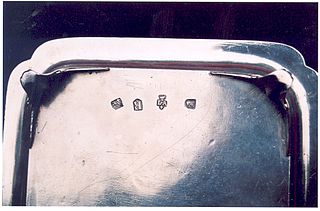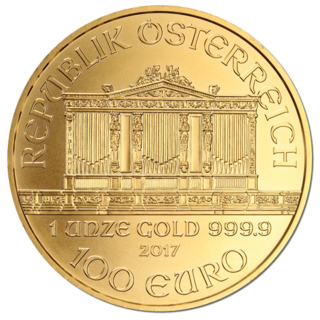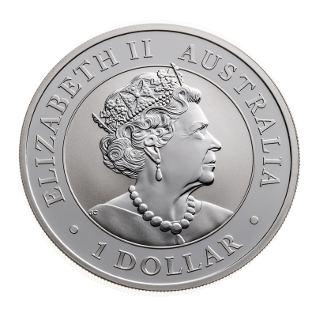Millesimal fineness
Millesimal fineness is a system of denoting the purity of platinum, gold and silver alloys by parts per thousand of pure metal by mass in the alloy. For example, an alloy containing 75% gold is denoted as "750". Many European countries use decimal hallmark stamps (i.e., "585", "750", etc.) rather than "14 k", "18 k", etc., which is used in the United Kingdom and United States.
It is an extension of the older karat system of denoting the purity of gold by fractions of 24, such as "18 karat" for an alloy with 75% (18 parts per 24) pure gold by mass.
The millesimal fineness is usually rounded to a three figure number, particularly where used as a hallmark, and the fineness may vary slightly from the traditional versions of purity.
Here are the most common millesimal finenesses used for precious metals and the most common terms associated with them.
Platinum
- 999.95: what most dealers would buy as if 100% pure; the most common purity for platinum bullion coins and bars
- 999—three nines fine
- 950: the most common purity for platinum jewelry
- 900—one nine fine
- 850
- 750
Gold

- 999.999—six nines fine: The purest gold ever produced. Refined by the Perth Mint in 1957. [3] [4]
- 999.99—five nines fine: The purest type of gold currently produced; the Royal Canadian Mint regularly produces commemorative coins in this fineness, including the world's largest, at 100 kg. [5]
- 999.9—four nines fine: Most popular. E.g. ordinary Canadian Gold Maple Leaf and American Buffalo coins.
- 999—24 karat, also occasionally known as three nines fine: e.g., Chinese Gold Panda coins.
- 995: The minimum allowed in Good Delivery gold bars.
- 990—two nines fine
- 986— Ducat fineness: Formerly used by Venetian and Holy Roman Empire mints; still in use in Austria and Hungary.
- 958.3—23 karat
- 916—22 karat: Crown gold. Historically the most widely used fineness for gold bullion coins, such as the oldest American Eagle denominations from 1795–1833. Currently used for British Sovereigns, South African Krugerrands, and the modern (1986—present) American Gold Eagles.
- 900—one nine fine: American Eagle denominations for 1837–1933; currently used in Latin Monetary Union mintage (e.g. French and Swiss "Napoleon coin" 20 francs).
- 899—American Eagles briefly for 1834—1836.
- 834—20 karat
- 750—18 karat: In Spain oro de primera ley (first law gold).
- 625—15 karat
- 585—14 karat
- 583.3—14 karat: In Spain oro de segunda ley (second law gold).
- 500—12 karat
- 417—10 karat: Lowest legal solid gold karat made in the US prior to the August 2018 revision of the FTC Guides (Now 1 karat is legal).
- 375—9 karat: Minimum standard for gold in some of the Commonwealth realms: Australia, Canada, New Zealand, UK, etc. It is also the minimum in Austria, Ireland, Portugal and France.
- 333—8 karat: Minimum standard for gold in Germany after 1884. [6] It is also the minimum for Denmark, Greece and Mexico.
- 1 karat: Legal minimum for gold in the US since the revision of the FTC Guides of August 2018.
Silver

- 999.99—five nines fine: The purest silver ever produced. This was achieved by the Royal Silver Company of Bolivia. [7]
- 999.9—four nines fine: ultra-fine silver used by the Royal Canadian Mint for their Silver Maple Leaf and other silver coins
- 999—fine silver or three nines fine: used in Good Delivery bullion bars and most current silver bullion coins. Used in U.S. silver commemorative coins and silver proof coins starting in 2019. [8]
- 980: common standard used in Mexico ca. 1930–1945
- 958: (23⁄24) Britannia silver [9]
- 950: French 1st Standard
- 947.9: 91 zolotnik Russian silver
- 935: Swiss standard for watchcases after 1887, to meet the British Merchandise Marks Act and to be of equal grade to 925 sterling. Sometimes claimed to have arisen as a Swiss misunderstanding of the standard required for British sterling. Usually marked with three Swiss bears.
- 935: used in the Art Deco period in Austria and Germany. Scandinavian silver jewellers used 935 silver after the 2nd World War
- 925: (37⁄40) Sterling silver The UK has used this alloy from the early 12th century. Equivalent to plata de primera ley in Spain (first law silver)
- 917: a standard used for the minting of Indian silver (rupees), during the British raj and for some coins during the first Brazilian Republic.
- 916: 88 zolotnik Russian silver
- 900: one nine fine, coin-silver, or 90% silver: e.g. Flowing Hair and 1837–1964 U.S. silver coins. Also used in U.S. silver commemorative coins and silver proof coins 1982–2018.
- 892.4: US coinage 1485⁄1664 fine "standard silver" as defined by the Coinage Act of 1792: e.g. Draped Bust and Capped Bust U.S. silver coins (1795–1836)
- 875: 84 zolotnik is the most common fineness for Russian silver. Swiss standard, commonly used for export watchcases (also 800 and later 935).
- 868: 83 1⁄3 zolotnik. Imperial Russian coinage between 1797 [10] and 1885 [11] .
- 835: A standard predominantly used in Germany after 1884, and for some Dutch silver; and for the minting of coins in countries of the Latin Monetary Union
- 833: (5⁄6) a common standard for continental silver especially among the Dutch, Swedish, and Germans
- 830: A common standard used in older Scandinavian silver
- 800: The minimum standard for silver in Germany after 1884; the French 2nd standard for silver; "plata de segunda ley" in Spain (second law silver); Egyptian silver; Canadian silver circulating coinage from 1920-1966/7 [12]
- 750: An uncommon silver standard found in older German, Swiss and Austro-Hungarian silver
- 720: Decoplata: [13] many Mexican and Dutch silver coins use this standard, as well as some coins from Portugal's former colonies, [14] Japan, [15] Uruguay, [16] Ecuador, Egypt, and Morocco.
- 600: Used in some examples of postwar Japanese coins, such as the 1957-1966 100 yen coin
- 500: Standard used for making British coinage 1920–1946 as well as Canadian coins from 1967-1968, and some coins from Colombia and Brazil.
- 400: Standard used for US half dollars between 1965 and 1970, and commemorative issue Eisenhower dollars between 1971 and 1978. Also used in some Swedish Krona coins.
- 350: Standard used for US Jefferson "war nickels" minted between 1942 and 1945.














